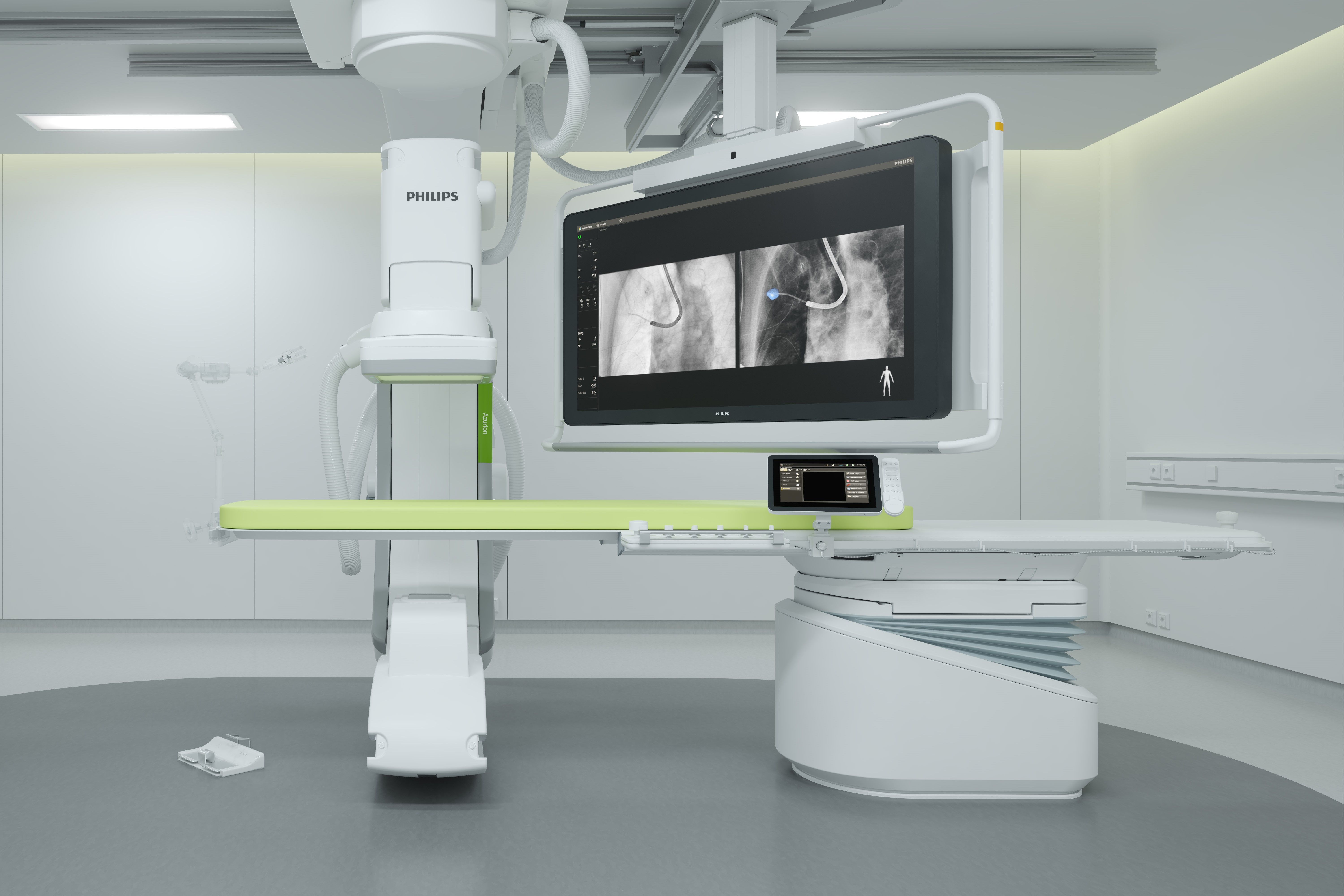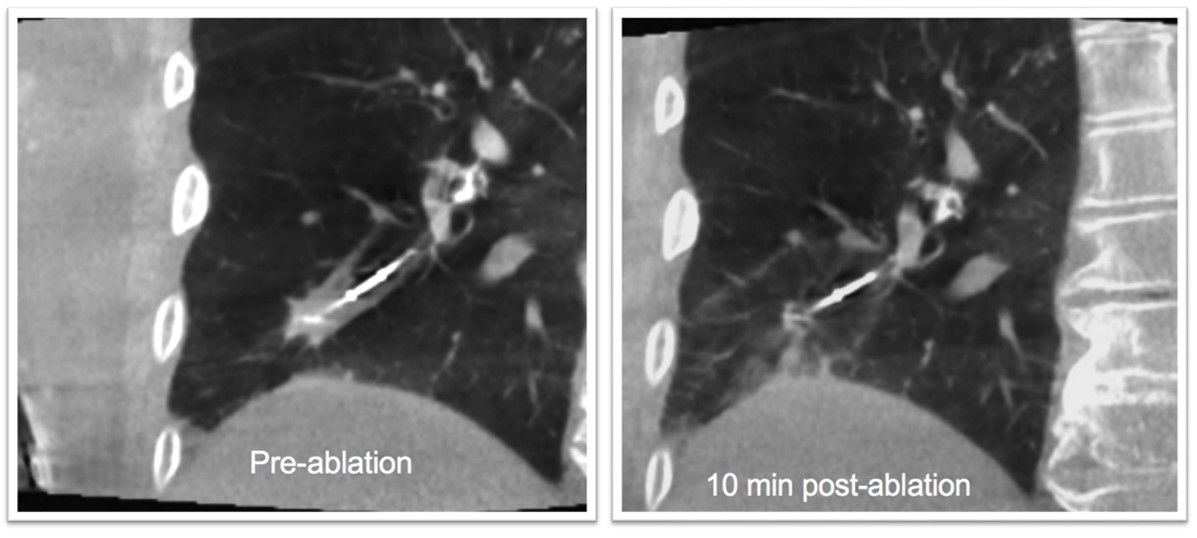Philips Launches 3D CT/X-Ray System for Faster Lung Cancer Diagnosis
Azurion Lung Edition is supports precision diagnosis and minimally invasive therapy in one room.
Global imaging provider Royal Philips announced the launch of its Azurion Lung Edition Monday. This advanced 3D imaging and navigation system combines CT and X-ray to support image-guided lung procedures.
By bringing together CT-like 3D images acquired at the tableside (Cone Bean CT) and live X-ray guidance, the system works specifically for bronchoscopy procedures. According to company officials it allows clinicians to perform both minimally invasive endobronchial biopsies, as well as lesion ablation, in the same procedure, potentially accelerating diagnosis and treatment.
Azurion Lung Suite. Courtesy: Royal Philips

Currently, worldwide, approximately 1.7 million people die from lung cancer – 60 percent of whom have been diagnosed at a late state where a surgical cure is unlikely. However, recent developments with earlier diagnosis and faster therapies – of which Cone Beam CT is considered the gold standard for treatment in one room – are showing promise in treating these patients.
Azurion Lung Suite Ablation. Courtesy: Royal Philips

“This is a very exciting time in the world of interventional pulmonology and advanced bronchoscopy,” said Michal Pritchett, M.D., director of the Chest Center of the Carolinas, FirstHealth Moore Regional Hospital, Pinehurst Medical Clinic. “One of the things that we’re particularly excited about is being able to diagnose patients, stage their cancer and treat them, all in a single procedure. As a diagnostic bronchoscopist, it’s exciting and rewarding to be able not only to diagnose patients, but to go on to treat them, as well.”
And, by combining Cone Beam CT with other technologies, such as robotics, said Gustavo Cumbo-Nacheli, M.D., director of bronchoscopy and interventional pulmonology at Spectrum Health in Grand Rapids, Mich., clinicians will be able to push beyond biopsy into greater treatment for the patient.
GE HealthCare Debuts AI-Powered Cardiac CT Device at ACC Conference
April 1st 2025Featuring enhanced low-dose image quality with motion-free images, the Revolution Vibe CT system reportedly facilitates improved diagnostic clarity for patients with conditions ranging from in-stent restenosis to atrial fibrillation.
Predicting Diabetes on CT Scans: What New Research Reveals with Pancreatic Imaging Biomarkers
March 25th 2025Attenuation-based biomarkers on computed tomography (CT) scans demonstrated a 93 percent interclass correlation coefficient (ICC) agreement across three pancreatic segmentation algorithms for predicting diabetes, according to a study involving over 9,700 patients.